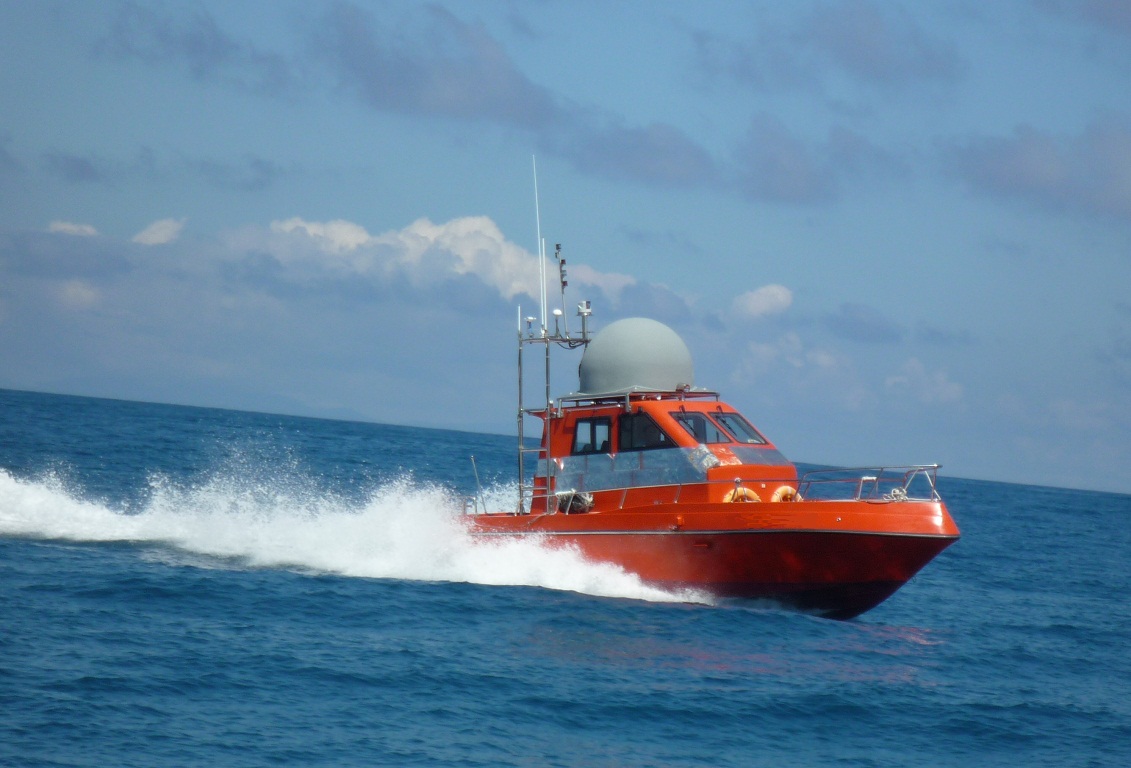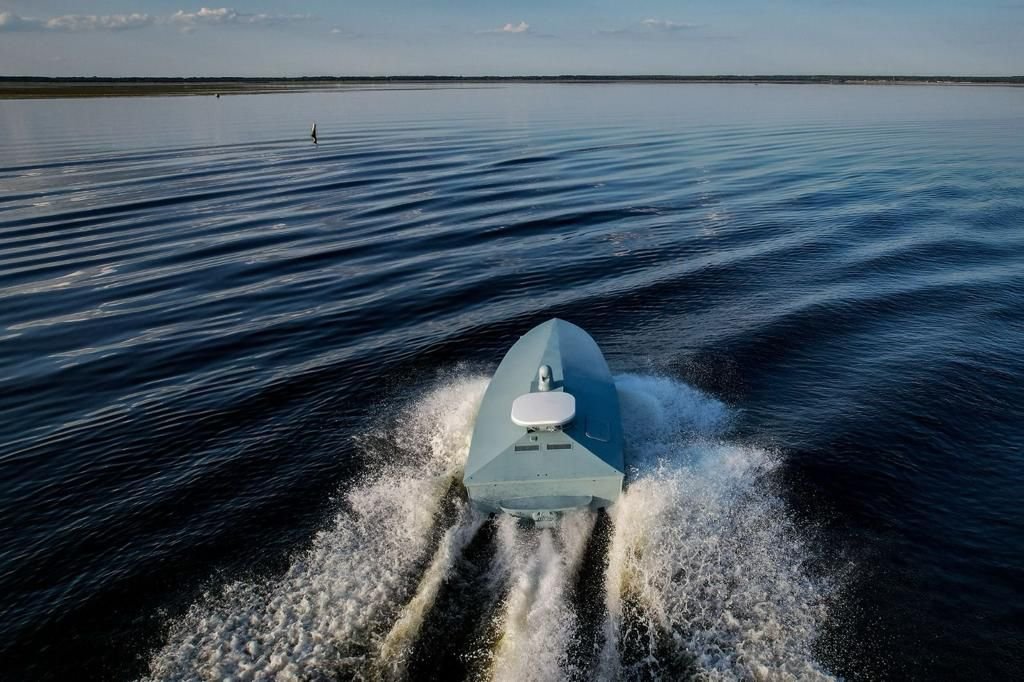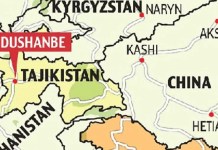As Taiwan bolsters its military capabilities to thwart a potential Chinese invasion, PLA military experts have dismissed Taiwan’s plan to develop a massive fleet of Unmanned Surface Vessels (USVs), or drone boats, as meaningless.
US Unveils NGAS Aircraft Concept That Could Make Its F-35, F-22 Jets ‘Double Capable’ To Fight China
In March this year, the Taiwanese military announced it was planning to purchase about 200 units of uncrewed surface vessels (USV) that could be used for multiple purposes. These ranged from a target drone to one armed with interchangeable modules for reconnaissance, surveillance, and electronic intelligence (ELINT), as well as warheads for attack purposes.
Reports have hinted that the plan has been influenced by Ukraine’s demonstrated capability to effectively employ kamikaze USVs against Russian warships. Since Ukrainian USVs have dealt a severe blow to the Russian Black Sea Fleet, Taiwan hopes that such ‘drone boats’ could help defend against Chinese naval invasion.
The Project Rapid & Surprising, launched by Taiwan’s National Chung Shan Institute of Science and Technology, aims to develop unmanned vessels that could launch kamikaze attacks on warships.
However, Chinese military experts are unconvinced that Taiwan can replicate Ukraine’s combat success. On May 5, a program by the state broadcaster CCTV derided the idea as “empty talk on paper,” which has little practical combat application.
Shao Yongling, a Chinese military analyst, told the Defence Review program, “Even if Taiwan builds a lot of unmanned ships, it probably wouldn’t have a chance to use them.”
She suggested that Taiwanese officials may have observed Ukraine’s use of underwater drones to sink Russian Black Sea fleet ships and may have been inspired to emulate its “swarming wolf pack” strategy. But, she asserted, the People’s Liberation Army (PLA) would destroy every drone site in Taiwan before launching naval operations.
“Most of Taiwan’s military installations, such as weapons depots including its airports and harbors, would be targeted in the first wave of strikes,” she said.
A PLA military analyst who did not want to be named told the EurAsian Times: “Suicide drone boats are just another way of conducting anti-surface missions, not dissimilar to anti-ship cruise missiles. For Taiwan, the relevance of suicide drone boats depends on the ability to deploy them (i.e., their bases). If the PLA can strike those as part of the first round of exchange of fire, then that would greatly diminish their effectiveness.”

When asked whether these drone boats would be useful for Taiwan, the analyst said, “They have utility in the sense that technically ‘anything’ has utility for Taiwan, but there are very relevant counters to them that the PLA has in the context of the cross-strait balance of missile, air, and naval power and geography in the region.
The self-ruled island, however, has been working to strengthen its air defenses to ward off the threat of hostile missiles and artillery fire from China. For instance, Taipei has acquired the Patriot missile defense systems, which have proven their combat efficacy in Ukraine against Russia’s cutting-edge ballistic and hypersonic missiles. This is in addition to developing and fielding indigenously developed air defense systems like the Sky Sword III.
Taiwan tested its air defense system in March using Patriot missiles and anti-aircraft artillery systems. Taiwan said it would intensify training in response to Chinese military “intrusions” around the island.
China Is Confident, So Is Taiwan
For Taiwan, the plan to acquire drone boats in huge numbers is largely in line with former Taiwanese Chief of Defense Staff Admiral Lee Hsi-ming’s Overall Defense Concept (ODF) doctrine.
The concept calls for acquiring thousands of low-cost, expendable drones, missiles, unmanned naval systems, fast-attack craft, missile boats, and mine layers to fight a prolonged war in a multi-layered campaign of attrition.
The optimism of Chinese military experts stems from their confidence in annihilating Taiwan’s bases along with a potent and credible defense against Taiwan’s drone boats.
Even if the drones survived, Wei Dongxu, another military observer, told CCTV that they would only have a 70-kilometer (43 mi) range and would depend on signal relay facilities that are susceptible to electronic jamming and interference from the PLA.
Wei said the PLA’s maritime warfare system is “fully capable” of defending against naval drone boats because they are delicate and susceptible to even tiny and medium-caliber guns. “If they were to carry out a surprise attack with these drone boats, they would end up in a trap themselves,” Wei said.
Contradictory to China’s belief, analysts argue that Taiwan does not expect to sink the PLAN (PLA Navy) or hand it a decisive defeat completely. Taiwan envisions these USVs to be more oriented towards disrupting and complicating Chinese naval operations long enough for help to arrive from allies like Japan or the US.

Like Taiwan, China has also been keenly watching the war unfold in Ukraine and is bracing for potential asymmetric tactics by Taiwan. A US-based global policy think tank, RAND Corporation, highlighted a Chinese article in the defense periodical Naval and Merchant Ships, published in January this year.
The PLA analysts largely acknowledged the threat posed by USVs to their ports, port infrastructure, and the ships docked at these ports. They note categorically in their analysis that USVs have “a high probability of causing damage.”
They suggested how the PLA Navy could defend itself against these attacks. To counter USV threats, the PLAN experts have suggested “a multi-domain three-dimensional defense system of sensing, defending, and attacking’.”
The PLAN experts stated that “USVs are susceptible to interference and detection, especially when it comes to their communication and navigation links.”
One can employ both passive and active strategies, the experts said. The authors advise “building a modern defense system that moves from just a point defense to a three-dimensional perimeter and surface defense” for coastal security.
- Contact the author at sakshi.tiwari9555(at)gmail.com
- Follow EurAsian Times on Google News




